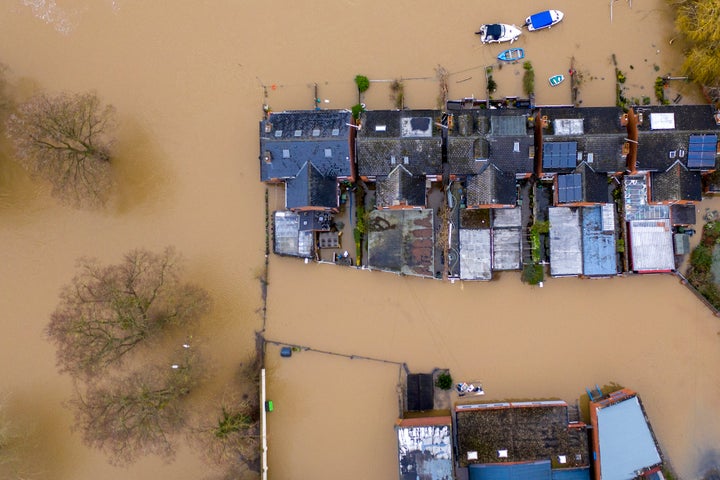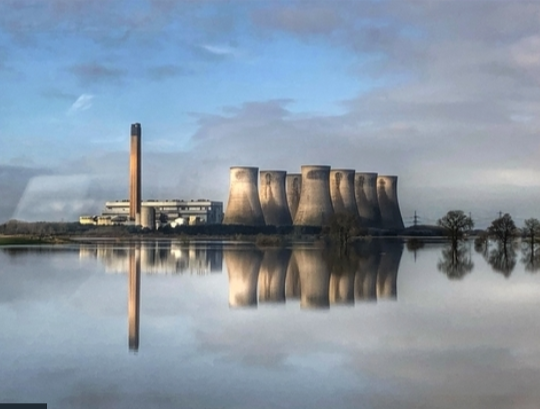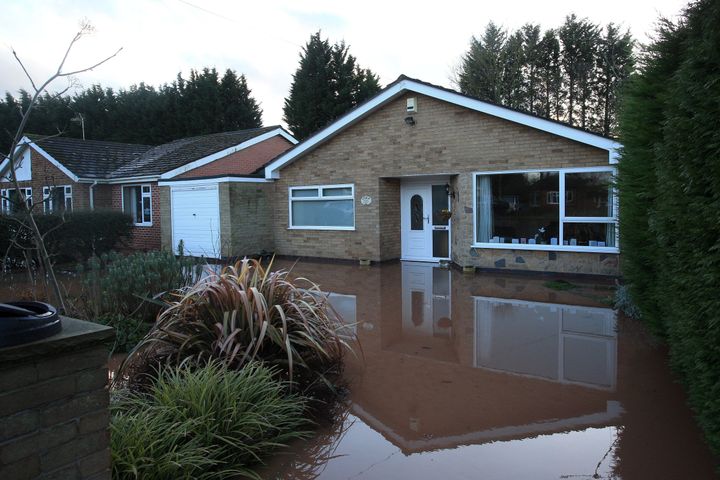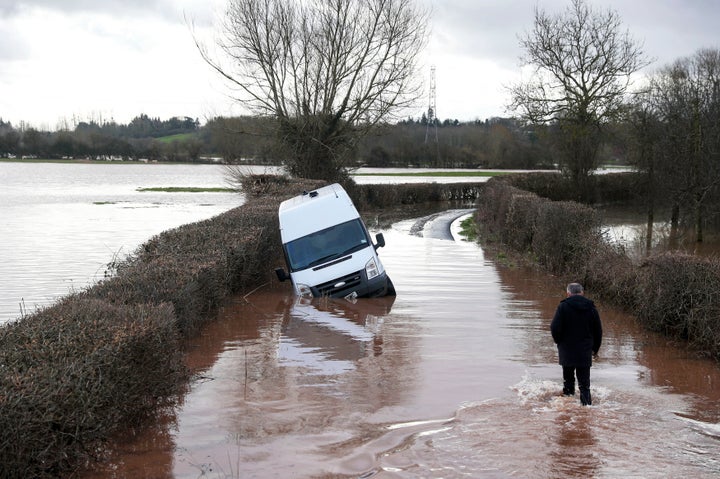Two weeks after Storm Ciara dumped floodwaters across the UK, and nearly one week since Storm Dennis did the same, there are still scores of flood warnings in place.
It’s not going to get immediately better – parts of the UK that have already been saturated by heavy rainfall and flooding are braced as forecasters warn of further wet and windy weather this weekend.
Long-term, the picture isn’t any rosier.
“The number of big storms we get, one after another after another, is predicted to increase with climate change – and we think that this is what we’re seeing right now,” says Professor Daniel Parsons, director of the Energy and Environment Institute told HuffPost UK earlier this week.
“The impacts of climate change are being seen right now in terms of these sorts of storms,” he said, adding that it is “absolutely is the case” that we’re seeing more flooding – and that it’s likely to get worse.
Such is the scale of the effects of extreme weather we’ve seen this week that a number of records have been broken - and not the kind you get a reward for.
Most flood warnings
The Environment Agency’s (EA) flood and coastal risk management executive director John Curtin said on Sunday that there were a record 594 flood warnings and alerts in force.
Curtin tweeted: “Breaking: we now have the most flood warnings and alerts in force (594) in England than any other day on record.”
Record-breaking river levels
England has already received 141% of its average February rainfall so far with some areas experiencing a month’s worth of rain in 24 hours.
River levels continue to exceed existing records across the country and according to the Environment Agency, nine rivers have seen record-breaking levels.
These are the ones to have breached record levels so far:
The River Severn

The River Derwent
A bridge was closed in Derbyshire earlier in the week as flood waters continued to rise, the Gazette & Herald reported, with the River Derwent bursting its banks as a result of the arrival of Storm Dennis.
With low-lying roads around the river flooded for several days, emergency services were forced to again remind drivers not to risk driving through vulnerable routes.
The River Aire

Footage shared by BBC Radio York, captured by a passer-by earlier this week, showed a car trapped on a flooded road with water rising almost to the windscreen as response teams helped the recovery effort amid record river highs.
The River Trent

Communities living close to the River Trent have been warned of the continued risk of flooding over the course of the weekend, with parts of the river placed under flood alerts.
The River Wye
Dramatic pictures shared online compared the usual peaceful scenes along the Wye with the destruction that has been wrought by the floods – with once user highlighting a picturesque footbridge almost consumed by the river, despite its usual position metres above the water.
Pictures from the village of Symonds Yat reveal the devastating impact of rapidly rising waters on businesses and infrastructure, with parts of the area rendered unrecognisable by the flood.
The Wye broke the previous record at Monmouth where waters rose to 7.15m over February 15/16, the New Civil Engineer reported.
The River Calder

For those living near the River Calder, perilously high waters are nothing new – residents have, in recent years, become used to the threat of their homes flooding.
The Calder Valley in Yorkshire has seen six floods in five years, the Guardian reported, with the arrival of Storm Ciara earlier in February once again causing chaos throughout the area.
ExaminerLive reported on February 9 that the river had reached its highest ever recorded level of 5.4m at Ledgard Bridge, Mirfield – higher than the Boxing Day floods of 2015, which saw the waters rise to 5.25m.
The River Ribble
The River Ribble, which runs through North Yorkshire and Lancashire, has also seen record highs – with deadly consequences. The Lancashire Post reported on Friday that a dog had been killed after being swept into a drain in Penwortham, two years after another pet had met the same fate.
BBC News reported on Thursday that the river had recently reached a record high, alongside several other rivers in the area.
The River Colne
Pictures shared on social media showed the River Colne, which has also reached it’s highest ever levels in some parts, breaking its banks – with the original course of the river almost completely obscured by the flooding.
The River Lugg

Gloucestershire Live reported on Wednesday that communities around parts of the River Lugg in Herefordshire had been placed under severe flood warnings, with some properties in the village of Sutton St Nicholas cut off completely as waters remained high.
The Environment Agency were also brought in on Wednesday in order to try and save the 14th century Mordiford Bridge from the flooding, Sky News reported.
Google Searches
Curtin also tweeted this week to say that a record number of people – 842,000 – had searched for the flood risks in their area on the 16 February.
Meanwhile, flood-hit residents in the Wye and Severn valleys are being urged to remain vigilant despite river levels falling below recent peaks, which included the highest ever reading in Hereford.
A multi-agency briefing held on Thursday heard emergency planners may have to re-think “models for what unprecedented looks like” following widespread flooding in Shropshire, Worcestershire and Herefordshire.
The meeting at West Mercia Police HQ at Hindlip Hall, near Worcester, included representatives from local councils and other agencies tasked with flood prevention and recovery.
Asked to comment on forecasts for levels on the Wye and Severn on Friday, Environment Agency deputy director Dafydd Evans said: “Our current models are predicting that those levels will be significantly less than what we have seen from Storm Dennis.”